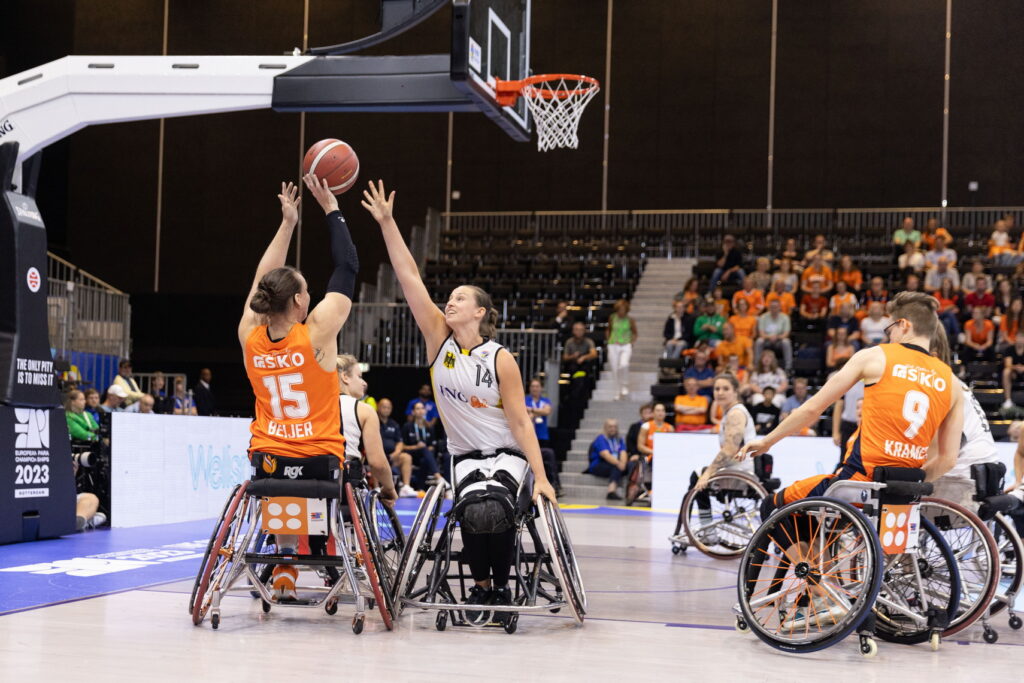
The game of wheelchair basketball is comparable to able-bodied basketball, which is why many national associations are integrated. Tactics are similar, but the chair allows a player to create more effective screens. The court size and basket height is the same (no dunking!), but there is no second dribble and three pushes without bouncing the ball is a travelling violation.
There are certain regulations pertaining to the chair, partly for safety reasons, but also to avoid unfair advantage. The chair may not have protruding parts and the footplate may not exceed a height of 11 cm’s from the floor. The height of the chair may not exceed 53 cm’s and the size of the wheels and thickness of the cushion are limited.
Same Sport, Different Shoes

Wheelchair basketball is a game for persons with a disability. However, the disability can range from paraplegic to amputee; from polio to clump-feet. In fact, most players do not sit in their wheelchairs during their every-day life, but utilise the wheelchair as a sport means (like a bicycle).
In order to ‘balance’ the various disabilities, wheelchair basketball uses a points-system with points being allocated according to the players abilities. The points range from 1 to 4.5 with 4.5 being the least-disabled. “4-pointers” have obvious advantages over a 1 pointer due to their body strength and balance and as a consequence, often are the taller players on the court. The total number of points may not exceed 14 points (for national teams) and 14.5 points (for clubs) on the court at any moment in time. If this is exceeded, the coach receives a technical foul.

